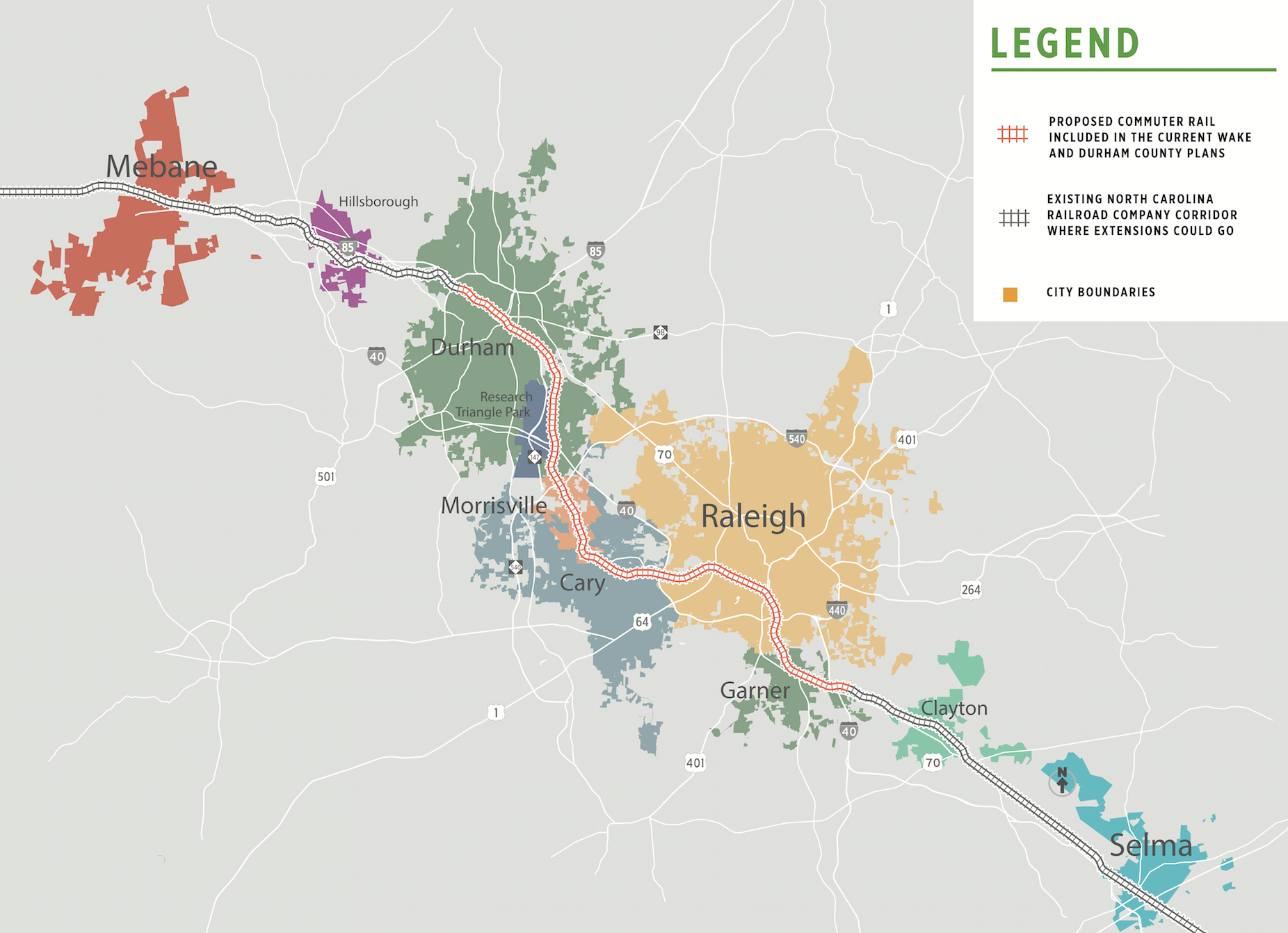
Greater Triangle Commuter Rail Update
GoTriangle completed the Greater Triangle Commuter Rail study, which identified significant benefits to the region from implementing regional rail, and significant feasibility challenges to implementing regional rail within the budget and timeline established in the current Wake and Durham Transit Plans. Public input on the project revealed favorable sentiment towards commuter rail and an appetite for transit solutions to mobility challenges in the Triangle. Regional rail would have economic benefits for the region by connecting workers to jobs, increasing the quality of life and attractiveness of the Triangle Region, and spurring additional development in transit-oriented hubs. Implementing frequent regional rail service would require overcoming significant challenges such as coordinating service on a corridor shared with freight and intercity rail, designing the project through downtown areas of the bigger cities along the corridor, and engineering appropriate configurations at numerous roadway crossings. CAMPO and DCHC MPO plan to undertake a follow-up study to evaluate additional options for incremental expansion of passenger rail service in the region.